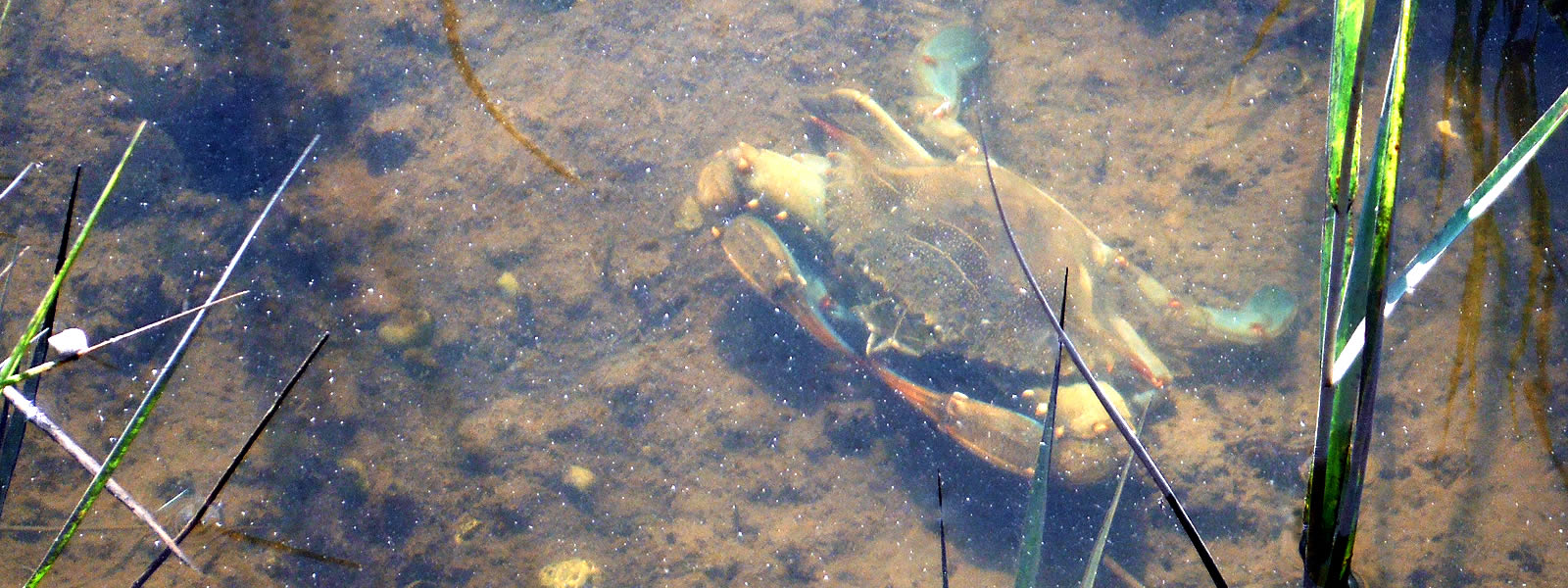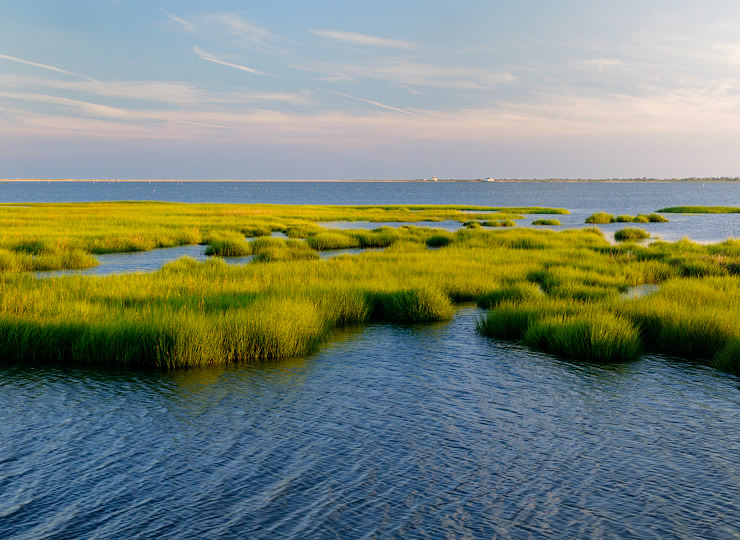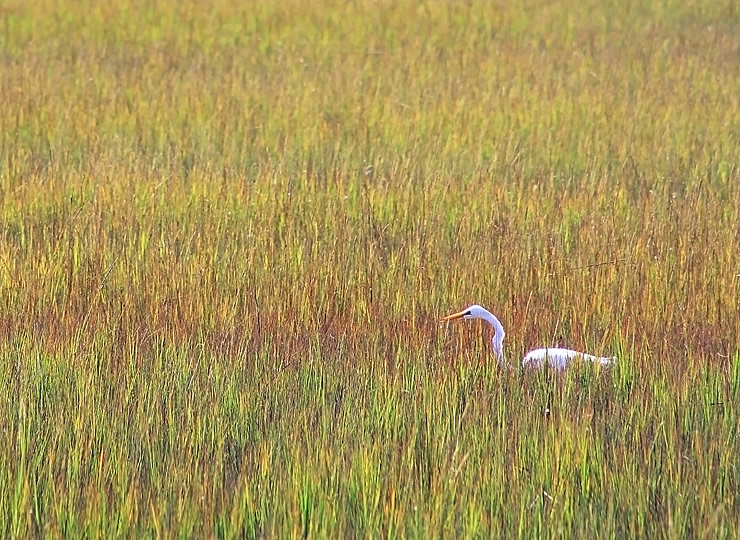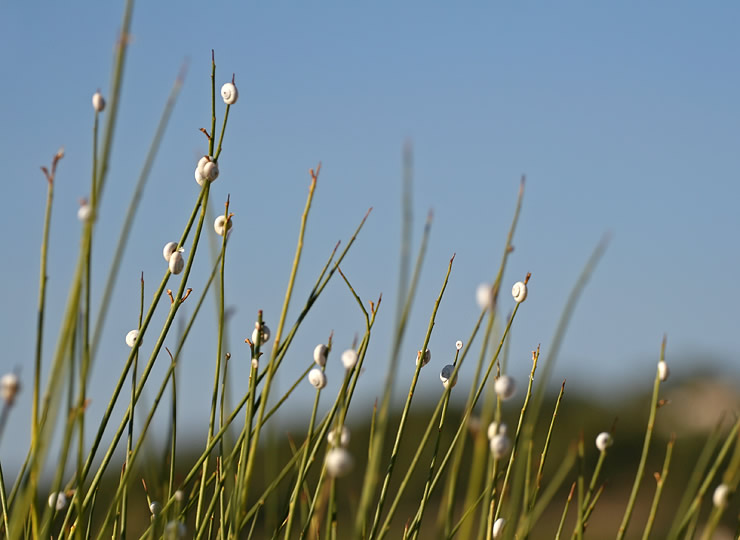Blue Crab
Callinectes sapidus

Blue crabs prey on herbivores in coastal marsh habitats. Without crabs, marsh grasses, which protect coastlines from erosion, are at risk.
Range map of the blue crab

Blue crabs live in salt marshes like this one. The salt marsh is a coastal ecosystem found all over the world. Photo credit: iStock/Getty Images Plus
Salt marshes are common ecosystems on the coasts in temperate climates. They offer a number of ecosystem services (benefits provided to humans by ecosystems), including pollution filtration, protection from erosion, and nurseries for many fisheries. Because of the importance of marshes, scientists and conservationists study the stability and resilience of these ecosystems.
Scientists wanted to know what determines the abundance of plants in a salt marsh. The abundance of plants in an ecosystem can be driven from the bottom up (by resources such as water, light, and nutrients) or from the top down (by animals such as herbivores and their predators). To test these two possibilities, the scientists set up an experiment in a Georgia salt marsh. Their experiment focused on marsh grass, the main plant in the marsh, and the periwinkle snail, the main herbivore that eats marsh grasses.
Ecologist Brian Silliman explains experiments that his team set up in salt marshes.
The scientists built cages over some areas of the marsh to keep periwinkle snails from getting in and out. Over time, they compared areas of the marsh with and without snails. In areas where snails were present, the marsh grasses were greatly reduced. In areas where snails were absent, the grasses grew more and had better survival. Based on these results, the scientists concluded that the abundance of plants in a salt marsh is determined from the top down.
So what keeps the snails from eating all the marsh grasses normally? To answer this question, the scientists investigated the role of blue crabs, one of the snails’ main predators. This time, they set up cages to keep crabs in or out of certain areas. In areas where crabs were absent, snails ate all the grass, and the marsh became a bare, muddy area called a mudflat. In areas where crabs were present, the grasses survived, and the marsh stayed healthy.
The scientists concluded that blue crabs keep the snail population from becoming too large. When crabs are absent (for example, from overfishing), the snails may destroy the marsh grasses and turn the marsh into a mudflat. Mudflats provide fewer ecosystem services compared to marshes and put coastlines at risk of erosion.

